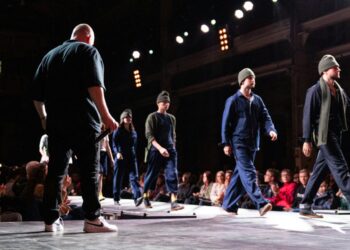Before throwing cash at those pricey modeling schools or workshops, smart up-and-coming models can build the skills that they need using totally free resources that are actually recommended by modeling industry professionals.
YouTube Channels from Actual Working Models
Have a look for channels run by models who are actually signed with a top agency. They might share some real behind-the-scenes stuff. Look for videos specifically on posing techniques or the casting process or how they dealt with all the industry jargon. And, actually, it’s pretty cool to see the pros demonstrate how to walk the runway and how to pull off those perfect facial expressions. Sometimes, they’ll even tell you the reasoning behind it all. These are good types of videos to watch.
Agency Websites & Blogs – The Real Deal
Websites like IMG, Elite, and Wilhelmina put up free guides and blog posts that will outline what they’re really looking for in a model. They’ll give you the lowdown on the kind of photos that they want to see. They might tell you what kind of poses work for them. You can also view what the current trends are in the industry. Study their model portfolios and you’ll get a feel for the professional poses, expressions, and the overall style that actually gets the jobs.
Instagram – the Ultimate Learning Ground
Follow some agency accounts, casting directors, and working models. Have a real close look at their posts. Which poses do you see coming up more than one time, again and again? How do they present themselves in a professional way? And what is it that sets these professionals apart from the hobbyists? Fashion photographers are always sharing posing tips and lighting basics, so keep an eye out for those tips as well.
Getting Some Practice In
Find some local fashion students who are looking for models for their portfolio projects. You can usually find out about them through the college Facebook groups or on campus bulletin boards. Or, try TFP (Time for Print) collaborations with up-and-coming photographers. This is a way that you might get some real shoot experience and even get to see some of your photos. Both options let you build up your portfolio and learn how to behave on set at the same time.
Self-Assessment Tools – The Most Important Thing
Use your phone to record yourself walking the runway and practicing your self-tapes so that you can review them. And, let’s not forget the mirror. It is the ultimate free tool. Spend 10 minutes a day practicing your facial expressions and angles and you’ll be way ahead of the game.
Get these free resources down pat first. Then, if after six months of consistent practice you still feel that you still need to invest in a paid education, then you can go for it.















